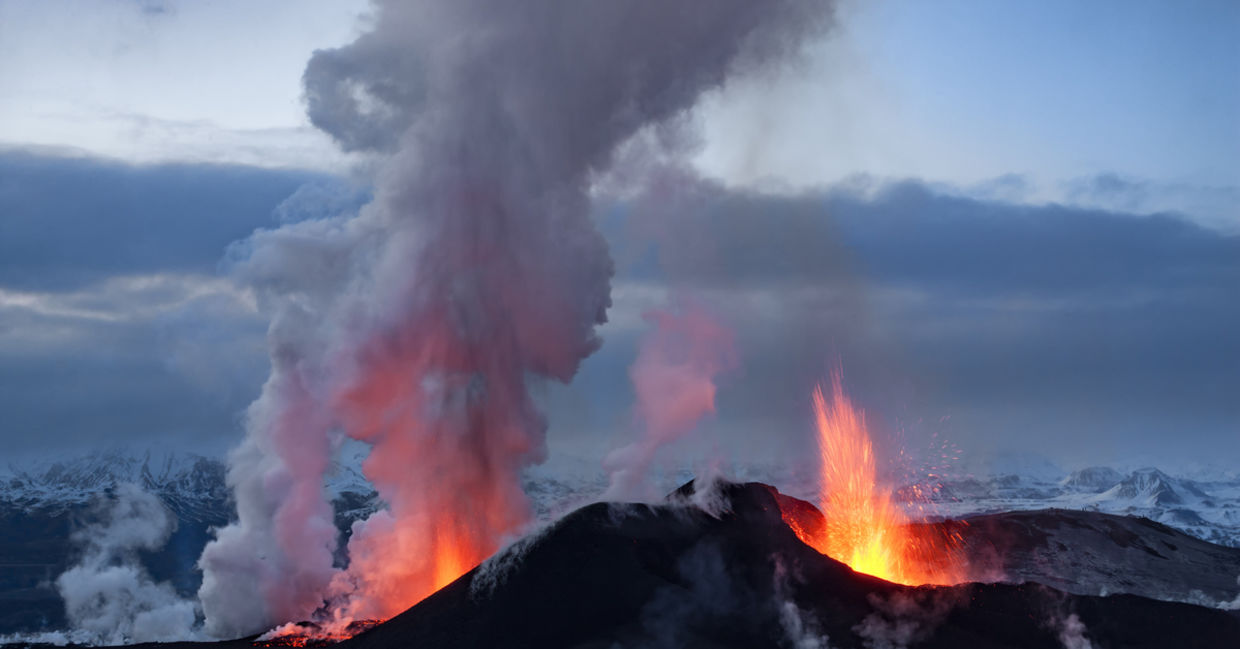
(J. Helgason / Shutterstock.com)
There is an abundance of ripe red tomatoes, crisp fresh cucumbers, and other equally fresh produce year-round in Iceland even though the temperatures are frequently below freezing for half the year and there is little or no sunlight for most of the winter.
This seems impossible but it's not. Icelandic farmers can harness the power of volcanoes to grow a bounty of vegetables and fruits even in the dead of winter.
Iceland uses geothermal energy harnessed from underground reservoirs of steam to and hot water stored underground that was generated by the land of fire and ice’s many volcanoes. The energy produced is used to produce electricity, melt snow from streets, heat homes and offices and greenhouses.
Icelandic farmers began heating and powering their greenhouses around 20 years ago. The mainly produce organic tomatoes, cucumbers, bell peppers, cabbage, and strawberries. Iceland's location in a cold climate just below the arctic circle makes growing organic easy according to Grown Here.
There are very few insects in Iceland, so the farmers don't have to use pesticides and they will use natural methods to control pests if needed. There is also little or no chemical contamination in the food grown in Iceland.
Previously, Iceland had to import most of its food because of the short growing season. "[Before], you were picking the last tomatoes in November and next you pick in April. Maybe 20 years ago, it was like that," Pall Olafsson, a farmer in Iceland told the World Economic Forum (WEF). "When we started using the lights and growing all year round, then it changed a lot."
But another game changer was the new technology that allows the farmers to control their state-of-the-art greenhouses remotely from smartphones, Knutur Rafn Armann told the WEF. "We have a steering computer in every greenhouse connected to our weather station, connected to our model PC computer, which is connected to the internet," Knutur said.
"So whenever I go somewhere I always have my iPhone with me and I can water the plants, open windows, and change settings or steer everything through my phone."
Iceland had to improve its food production and become more self-sufficient after the 2008 financial crisis and the volcanic eruption in 2010 that closed Iceland's airspace according to the WEF.
It is just common sense for the remote country to produce as much of its own food as possible, Gunnlaugur Karlsson, managing director of Solufelag Gardyrkjumanna, which packages and markets fruit and vegetables, told the WEF. Now, at least half of the tomatoes and cucumbers sold in Iceland is locally grown.
In 2018, Solufelag Gardyrkjumanna began working with farmers to sell their food to kindergartens so that the children could eat locally grown organic food. After all, buying local and not using fossil fuels for transporting food goes hand-in-hand with Iceland's commitment to being green and can be a good example for the rest of the world to follow.
According to the United Nations Food and Agriculture Organization, “the utilization of renewable energy such as geothermal sources is of importance in an increasingly resource-constrained world where agriculture must become more productive and sustainable.”
Iceland's success shows that sustainable agriculture is possible in even the harshest climates. While most of the world’s countries do not have endless geothermal power, they do have an abundance of sunlight, wind, or hydropower that can be harnessed to make sure that food scarcity will be a thing of the past.
YOU MIGHT ALSO LIKE:
Farmers Forgo Pesticides and Use Ducks to Grow Crops
Traditional Farming Techniques Are Stopping Desertification
7 Urban Farming Initiatives to Inspire Your Inner Gardener







